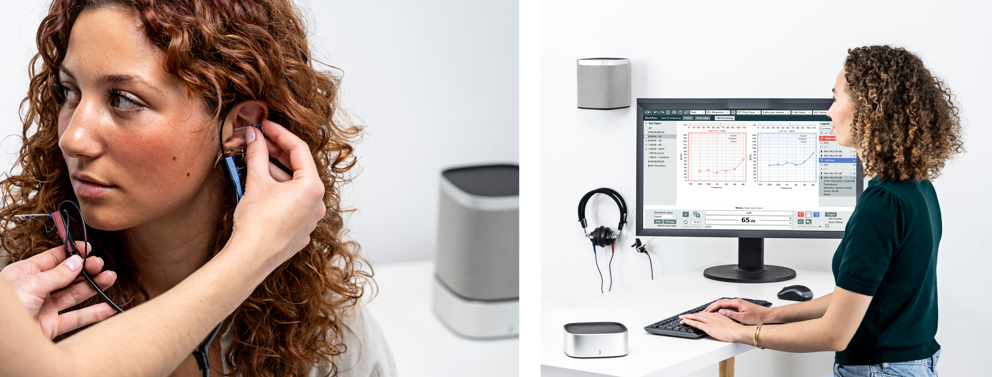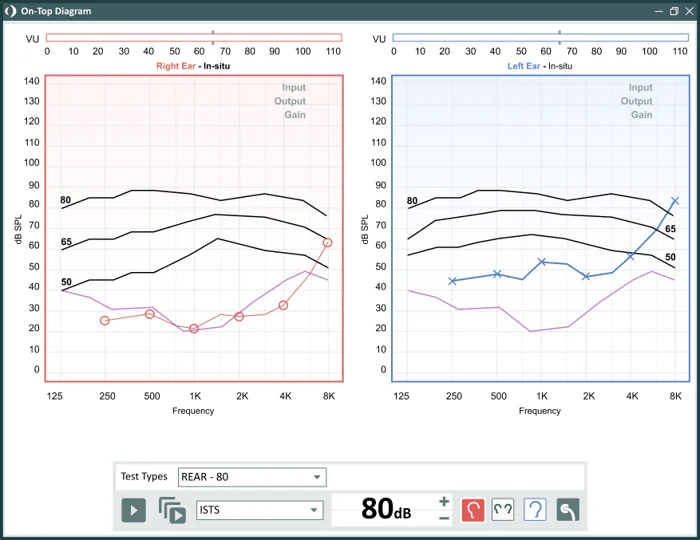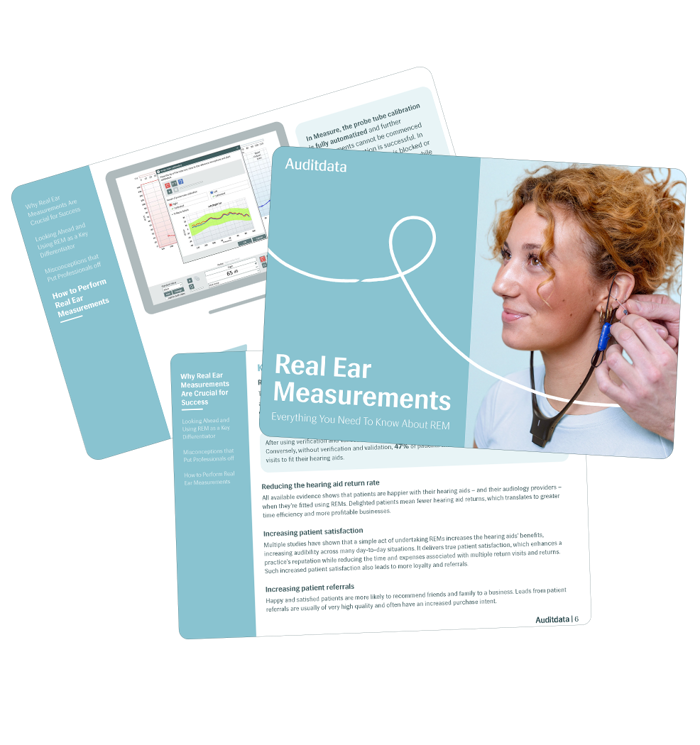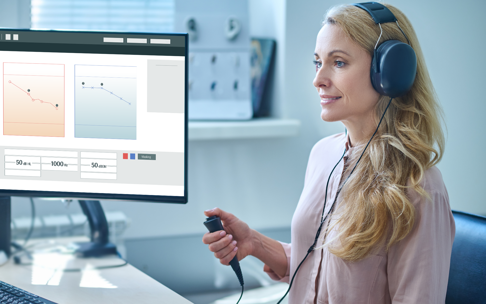
Many hearing clinics experience high volumes of hearing aid returns, with customers complaining that they can’t hear properly, even with their hearing aids in. These clinics often conduct multiple rounds of troubleshooting to identify – and resolve – these problems.
So yes, real ear measurements are necessary if you want to stop seeing the same customers repeatedly and prevent your audiologists from seeing new customers and making additional sales.
These problems could have been resolved quickly and effectively if the audiologists had used Real Ear Measurements (REM) in the initial appointments to verify and validate customers’ hearing levels. Studies have repeatedly shown that using REM during hearing aid fittings delivers better results and happier customers.
Unfortunately – and surprisingly – REMs have not been widely embraced in the audiology industry, with less than 30% of audiologists using REM to verify hearing aid fittings, even though it’s an established best practice and has been proven to offer extensive benefits to both the customers and the clinics.
Why Are Real Ear Measurements Important: Improve Your Metrics
Reduces Return Visits
After using REM, 76% of patients experienced above-average success with their hearing aids after only one or two visits. Without REM’s verification and validation, nearly half (47%) of patients had below-average success and required four to six visits to readjust their hearing aids.
Reduces Hearing Aid Returns
Studies show that customers are happier with their hearing aids when they’re fitted using REM. Happy customers mean fewer hearing aid returns, which translates to greater time efficiency, higher profits, and other positive outcomes for your clinics.
Increases Customer Satisfaction
Multiple studies have shown that REM testing increases the hearing aids’ benefits and customers’ ability to hear better when wearing them. These positive outcomes boost customer satisfaction and loyalty.
Increases Customer Referrals
Happy, satisfied customers are more likely to recommend friends and family to a business. Leads from customer referrals are usually very high quality and often have high purchase intent.
Saves Time And Money
The initial cost of your REM equipment will be quickly repaid. Since it accurately measures customers’ hearing with hearing aids, it takes the “guesswork” out of the exam and allows the fitting to be right the first time.
Are Real Ear Measurements Necessary - How 10 Minutes Can Make a Difference

Not only is REM an effective revenue driver for any hearing clinic, but offering REM will differentiate your business from over-the-counter options, online providers, and other hearing care businesses in your area that doesn't provide them.
Additionally, REM testing is quick and easy. REM takes no more than five or ten minutes to perform.
Auditdata’s Measure audiology instrument offers REMs as an add-on module that integrates well with the hardware. The Measure Audiometer guides users through the process in a clear step-by-step manner, with a helpful nudging feature to ensure best practice standards are consistently followed, and no steps are skipped or forgotten.
It’s important to note that the process is painless for customers. Inserting the probe tube will not hurt the customer or damage their tympanic membrane (TM). The probe tube is extremely thin, flexible, and made from a very soft material.
In addition, the transducer has an integrated measurement tool that helps the audiologist insert the probe tube to a proper depth.
If an audiologist fits a full prescription using REMs, the customer may not initially like it because the louder sounds may be startling at first. Therefore, it’s wise to use the acclimatization feature to help customers get used to the new sounds gradually.
After fitting the customer to full prescription and verifying with REM, set the gain to an acceptable level using the auto acclimatization feature. By slowly introducing the gain that each customer needs, they’ll have time to get used to the louder sounds, and it won’t seem as severe or uncomfortable initially.
Be aware that when some customers get to their full prescription, they don’t like it. Everyone is different, and some people prefer a slightly diminished sound. Show your willingness to customize the hearing aids – and the experience – by caring for each customer as an individual.
Step 1
Prepare the patient
- Perform an otoscopy to check for any contraindications like ear wax, perforated ear drum, or discharge. Place the patient in front of the REM speaker at a distance of 80 to 100 cm.
- Calibrate the REM probe tubes by holding the REM headset in front of the speaker and running the calibration in the Measure software. Anomalies in the probe tube frequency response may indicate a blocked or broken probe tube.
- Insert the probe tube into the ear canal of the patient. Typically, the insertion depth is between 28 and 30 mm. The Measure REM probe tube has an adjustable marker that helps you place the tube optimally.





